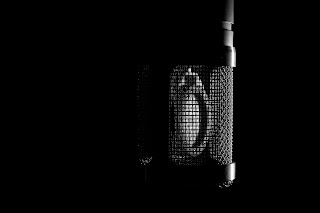
If you’re new to photography, you will want to read over this section thoroughly at least a couple times to better understand some of the things I talk about on this blog. If you already have an understanding of your three basic exposure controls (aperture, shutter speed, and ISO) you can skip over this section without missing anything.
Understanding exposure is the basis of everything in photography. Every single technique you do involving a camera will hinge on your understanding of exposure and how to control it. Discussing aperture, shutter speed and ISO can get dry and boring, but trust me, once you understand it, you’ll be able to do so much more with your camera. Every photographer needs to have at least a basic understanding of exposure. With practice, controlling exposure becomes second nature.
There are three controls every camera everywhere uses to control exposure. That's shutter speed, aperture, and ISO. Each of these has their own effects on the photo besides exposure when you change them, but I won't get into that here.
It's very handy to quantify exposure in a camera because each of the controls I mentioned can be adjusted in something called "stops." A stop is a quantity of light on a scale. One stop brighter means doubling the light, and one stop dimmer means halving the light. In this way it's easy to quantify the relative amount of light in a photo in terms of stops.
Shutter speed refers to the amount of time the camera is exposing the sensor (may be a piece of film or a digital sensor or whatever) to light. An example of a "normal" exposure time is 1/250 second. If I wanted to make the picture darker, I would take away a stop of light by halving the amount of time the sensor is exposed to light. That would mean I would expose the sensor for 1/500 second, which is half the time of 1/250 second. If I wanted to make the picture lighter, I would add a stop of light by exposing for 1/125 second, which is twice as long as 1/250 second.
Common shutter speeds in 1 stop increments: (in seconds)
1 1/2 1/4 1/8 1/15 1/30 1/60 1/125 1/250 1/500 1/1000 1/2000 1/4000
(There are a couple points where the numbers don’t exactly match up here. That’s OK, it’s to make the other numbers nice and pretty and round.)
Aperture refers to the size of the hole in the lens that lets light through during an exposure. This one's harder to understand in terms of how exactly it works, but know that it works the same way as shutter speed in terms of stops. In the aperture, a bigger hole lets in more light, and a bigger hole has a smaller f/number, and vice versa. The specific order of numbers are harder to remember, but know that each number is one stop, which either doubles or halves the amount of light, and therefore the exposure. For example, if I'm shooting at f/8 and I want to make the picture darker, I would halve the light by moving to f/11, and that would make the picture darker. If I'm at f/8 and I want to make the picture lighter, I would double the light and go to f/5.6.
Common apertures in 1 stop increments:
f/1.4 f/2 f/2.8 f/4 f/5.6 f/8 f/11 f/16 f/22 f/32
ISO refers to the sensor's sensitivity to light. A more sensitive imagesensor will be able to take the same amount of light and make a brighter exposure. Again, ISO works with the same double/half stop system as shutter speed/aperture. If I'm shooting at ISO 400 and I want to make the picture darker, I would halve the light by moving to ISO 200, and that would make the picture darker. If I'm at ISO 400 and I want to make the picture lighter, I would double the light and go to ISO 800.
Common ISOs in 1 stop increments:
50 100 200 400 800 1600 3200 6400
These three controls working together give you a huge amount of control over your photo. Learn how to make exposure work, and learn the benefits of moving up and down the range of each of the three controls. Then you can start making your camera work for you.



